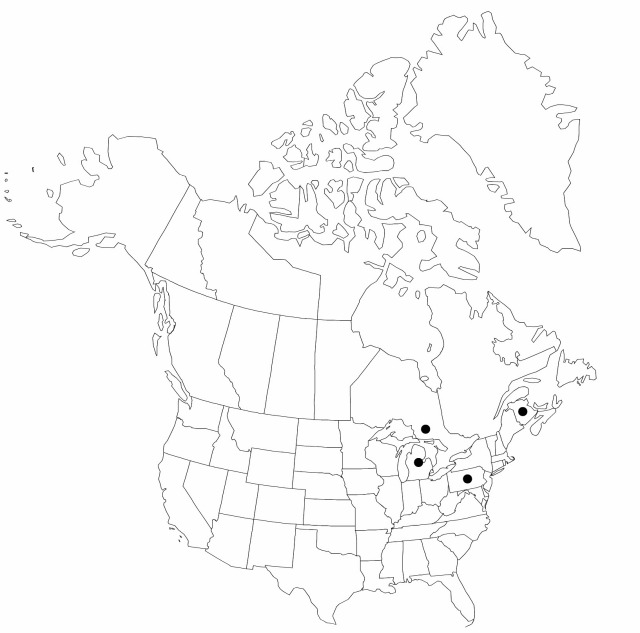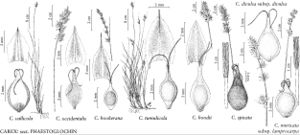Difference between revisions of "Carex muricata subsp. lamprocarpa"
Anal. Kvét. Ceská, 88. 1879.
FNA>Volume Importer |
imported>Volume Importer |
||
| Line 6: | Line 6: | ||
|place=88. 1879 | |place=88. 1879 | ||
|year=1879 | |year=1879 | ||
| + | }} | ||
| + | |special_status={{Treatment/ID/Special_status | ||
| + | |code=I | ||
| + | |label=Introduced | ||
| + | }}{{Treatment/ID/Special_status | ||
| + | |code=F | ||
| + | |label=Illustrated | ||
}} | }} | ||
|basionyms= | |basionyms= | ||
| Line 27: | Line 34: | ||
|elevation=10–200 m | |elevation=10–200 m | ||
|distribution=N.B.;Ont.;Mich.;Pa.;Europe;w Asia. | |distribution=N.B.;Ont.;Mich.;Pa.;Europe;w Asia. | ||
| + | |introduced=true | ||
|discussion=<p>See comments under 33. <i>Carex divulsa</i>.</p><!-- | |discussion=<p>See comments under 33. <i>Carex divulsa</i>.</p><!-- | ||
--><p>The name <i>Carex muricata</i> has sometimes been misapplied to <i>C. echinata</i> (sect. Stellulatae).</p> | --><p>The name <i>Carex muricata</i> has sometimes been misapplied to <i>C. echinata</i> (sect. Stellulatae).</p> | ||
| Line 51: | Line 59: | ||
|publication title=Anal. Kvét. Ceská, | |publication title=Anal. Kvét. Ceská, | ||
|publication year=1879 | |publication year=1879 | ||
| − | |special status= | + | |special status=Introduced;Illustrated |
| − | |source xml=https:// | + | |source xml=https://bibilujan@bitbucket.org/aafc-mbb/fna-data-curation.git/src/bb6b7e3a7de7d3b7888a1ad48c7fd8f5c722d8d6/coarse_grained_fna_xml/V23/V23_502.xml |
|genus=Carex | |genus=Carex | ||
|section=Carex sect. Phaestoglochin | |section=Carex sect. Phaestoglochin | ||
Revision as of 21:35, 27 May 2020
Plants without conspicuous rhizomes. Culms 10–85 cm, 1.5–2.5 mm wide basally, 0.6–0.8 mm wide distally. Leaves: sheaths tight, green, fronts hyaline, with some cross veins; ligules to 3.5 mm, usually wider than long; widest leaf blades 2–4mm wide. Inflorescences with 4–7 spikes, 1–2.5(–3) cm × 7–10 mm; proximal internodes 5–10 mm, as long as proximal spikes; proximal bracts to 2.5 cm; spikes with 5–10 spreading or ascending perigynia. Pistillate scales brown with green, 3-veined center, ovate, 2.1–4.5 × 1.5–2.2 mm, body as long as perigynium, apex acute or short-awned. Anthers 1–3 mm. Perigynia pale green becoming dark brown and glossy, veinless or to 7-veined abaxially, 3–4(–4.5) × 1.8–2.5 mm, margins serrulate distally; beak 0.5–1.5 mm, apical teeth 0.2–0.5 mm. Achenes circular to elliptic-circular, 1.9–2.4 × 1.5–2 mm.
Phenology: Fruiting late spring–early summer.
Habitat: Fields, pastures, lawns, scrub
Elevation: 10–200 m
Distribution

Introduced; N.B., Ont., Mich., Pa., Europe, w Asia.
Discussion
See comments under 33. Carex divulsa.
The name Carex muricata has sometimes been misapplied to C. echinata (sect. Stellulatae).
Selected References
None.
